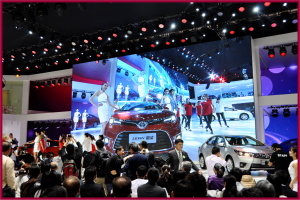Toyota first entered the Chinese market with the ungainly Crown sedan in 1964 – long after the Japanese rape of Nanjing during WW2. Toyota’s Chinese relations, and this applies to all other Japanese car companies in China as well, have experienced some tough times since then, most recently over the disputed ownership between the Chinese and Japanese governments of some islands off the Chinese coast. This kerfuffle led to Communist Chinese government approved demonstrations and riots, maybe orchestrated and run by China, that sent sales of Japanese cars plummeting.
Sales have since recovered, because China’s industrial policy requires local Chinese partners to allow offshore automakers to operate in the world’s largest auto market. You can be certain that the Chinese partners of Japanese automakers explained to the government how much they were getting hurt by the boycotts and protests. Officials of the so -called middle kingdom – with absolute scorn for foreigners were caught in the middle and it backed off overt anti-Japanese policies. (General Motors, Ford, Japanese Post China Sales Records)
Toyota is celebrating at the Beijing Motor Show with its joint-venture partners FAW Group (FAW) and Guangzhou Automobile Group Co., Ltd. (GAC) with a booth with more than 3,000 square meters with 38 vehicles and concepts on display.
Toyota and Honda sales in China jumped 43% and 28%, respectively, in February 2014. Both companies were suffering from an ethnic backlash and sales boycott triggered by the over ownership of some islands in the East China Sea that boiled over in 2012. Japanese makers were forced to cut production by roughly 50% at the height of the tensions because of lost sales.
Because of the strong growth by offshore brands, sales of domestic Chinese brands are declining in China. In January, the sales of German cars, American cars, Japanese cars, Korean cars and French cars respectively accounted for 28.6%, 16.7%, 14.7%, 11.3% and 5% of the total sales of cars.
The two Toyota car stars in the booth at Beijing this year are the all-new Corolla produced by FAW and Levin produced by GAC. At a press conference at the show, Toyota EVP Yasumori Ihara claimed the two models would: “from next year, be available as hybrid models with major hybrid components produced in China.”
This is the first-time Toyota will make hybrid cars with hybrid components produced outside Japan. Ihara also expressed his desire to sell, eventually, 2 million vehicles annually in China, which would still leave it lagging by a large margin General Motors and Volkswagen Group.
Toyota also presented its “Get Going” campaign, led by international superstar Beyoncé. Toyota in the marketing promotion offers to support “lucky youth to help their dreams come true.” Featured is Li Ke, the first “lucky girl” (different from unlucky Korean comfort girls forced into sexual slavery during WW2 by the Japanese) being helped to become a fashion model.


